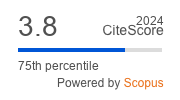Article | Open Access
The Poly-Rhythmic City: Urban Community Land Trusts as Opposition to the Slow Violence of Housing Development
| Views: | 1492 | | | Downloads: | 1894 |
Abstract: Gradual and invisible, “slow violence” has been applied to housing and urban redevelopment, gentrification, and its embodiment as stress and anxiety by those affected, usually the least well-off. This article presents a case study of the London Community Land Trust (CLT), which was engendered from a combination of the longstanding traditions of East End opposition to social harms, combined with new mutual housing forms that emerged in the early 2000s. Campaigners invested energy in the CLT, generating new rhythms and an imagination of territory that would provide an alternative to the failure of mainstream housing systems. The homes would be affordable to local people on average incomes and the neighbourhood characterised by a sense of belonging and community. The case study’s findings offer a fresh perspective on London’s housing crisis, and the potential of CLTs, by centring the experience and reflections of some whose lack of a suitable home threatened them with spatial displacement. Participant observation, surveys, and interviews with residents show the depth and impact of London’s housing crisis through reflections on the past, the joys and challenges of moving to an affordable, secure home, while building new relationships with neighbours and the physical environment.
Keywords: community land trust; community-led housing; slow opposition; slow violence; territorialisation
Published:
© Robert Read, NezHapi-Dellé Odeleye, Alison Hirst, Alison Pooley. This is an open access article distributed under the terms of the Creative Commons Attribution 4.0 license (http://creativecommons.org/licenses/by/4.0), which permits any use, distribution, and reproduction of the work without further permission provided the original author(s) and source are credited.


